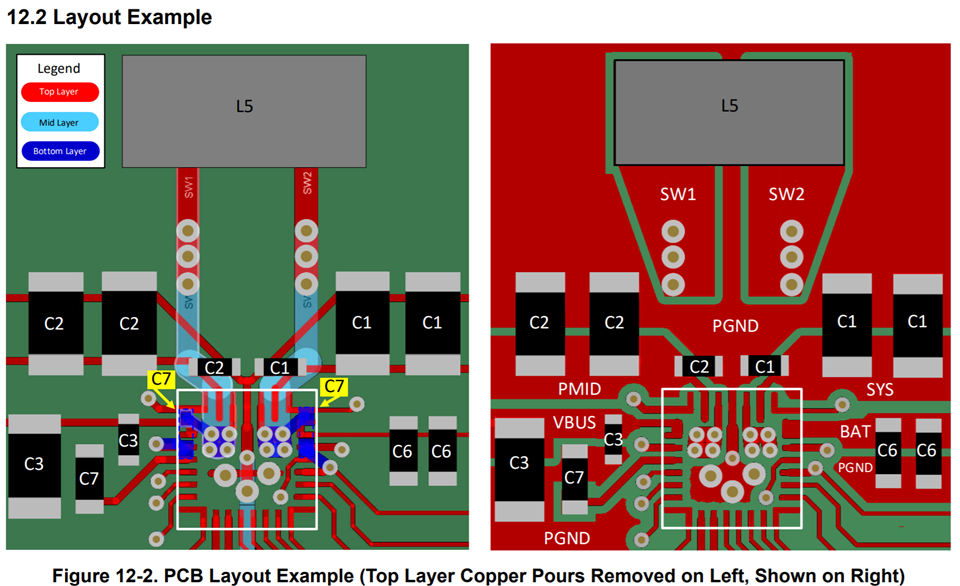Using BQ25792 standalone IC. KICAD schematic uploaded below. 1s configuration is implemented. Boosting from 3.6V to 5V.
While using OTG mode the discharging current does not exceed 500mAmps. There is a LED placed at VBUS. So if the current exceeds 500mAmps the led starts blinking and current starts dropping and shuts down IC shortly.


